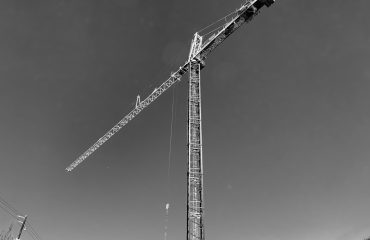body { font-family: sans-serif; line-height: 1.6; }
h1, h2, h3 { color: #333; }
h1 { font-size: 2.5em; }
h2 { font-size: 2em; }
h3 { font-size: 1.5em; }
The global steel market is a complex web of supply and demand, influenced by geopolitical events, economic fluctuations, and raw material costs. Adding another layer of complexity is the pricing of steel in foreign currencies. Understanding this dynamic is crucial for businesses involved in importing, exporting, or trading steel internationally. This post will delve into the intricacies of steel pricing in foreign currency, offering insights into the factors that influence prices, the risks involved, and strategies for managing those risks.
Understanding the Currency Exchange Rate’s Impact on Steel Prices
The price of steel, often quoted in US dollars, euros, or other major currencies, is directly affected by fluctuations in exchange rates. A strengthening US dollar, for example, makes steel imports more expensive for buyers using other currencies. Conversely, a weakening dollar makes US steel more competitive in the global market. This dynamic creates significant uncertainty for both buyers and sellers. A seemingly stable steel price in USD can translate into wildly fluctuating prices in local currencies, depending on the exchange rate. This volatility necessitates careful monitoring of currency markets and proactive risk management strategies.
Key Factors Influencing Steel Prices in Foreign Currency
Numerous factors beyond exchange rates impact steel prices denominated in foreign currencies. These include:
- Raw Material Costs: The price of iron ore, coal, and other raw materials significantly influences the cost of steel production. Fluctuations in these commodity prices, often denominated in US dollars, directly impact the final price of steel in various currencies.
- Global Supply and Demand: A global shortage of steel, perhaps due to production disruptions or increased demand, will push prices upward regardless of the currency. Conversely, oversupply can lead to price declines.
- Geopolitical Events: International trade disputes, sanctions, and political instability in major steel-producing regions can disrupt supply chains and significantly impact prices. These events can lead to sudden and unpredictable price swings.
- Government Policies and Regulations: Tariffs, quotas, and other trade policies implemented by governments can significantly influence steel prices. These policies can create artificial scarcity or increase the cost of imports, affecting prices in local currencies.
- Transportation Costs: Shipping costs, influenced by fuel prices and global logistics, contribute to the overall cost of steel. These costs are often impacted by global events and can fluctuate significantly, affecting final prices.
Hedging Strategies to Mitigate Currency Risk in Steel Transactions
Given the inherent volatility, businesses involved in international steel trade need effective hedging strategies to mitigate currency risk. These strategies aim to protect against adverse movements in exchange rates. Common hedging techniques include:
- Forward Contracts: These contracts lock in a future exchange rate, eliminating the uncertainty associated with fluctuating rates. They provide price certainty but can limit potential gains if the exchange rate moves favorably.
- Futures Contracts: Similar to forward contracts, but traded on exchanges, offering greater liquidity and standardization. They allow for hedging against anticipated price movements.
- Options Contracts: These provide the right, but not the obligation, to buy or sell currency at a specific rate within a specified time frame. They offer flexibility but come with a premium.
- Currency Swaps: These involve exchanging principal and interest payments in different currencies over a specified period. They are useful for managing long-term currency exposures.
Analyzing Steel Price Data and Forecasting Future Trends
Effective risk management requires careful analysis of steel price data and forecasting future trends. Businesses should utilize various data sources, including industry publications, market reports, and government statistics, to monitor price movements and identify potential patterns. Sophisticated forecasting models, incorporating macroeconomic indicators and geopolitical factors, can be used to predict future price movements. However, it’s crucial to remember that steel price forecasting is inherently uncertain, and any prediction should be treated with caution.
Risk Management and Best Practices for International Steel Trading
Minimizing risk in international steel trading requires a multifaceted approach. Beyond hedging, businesses should consider:
- Diversification of Suppliers and Markets: Reducing reliance on a single supplier or market can help mitigate the impact of unexpected price fluctuations or supply disruptions.
- Strong Contractual Agreements: Clearly defined contracts specifying payment terms, delivery schedules, and price adjustment mechanisms are crucial. Incorporating clauses addressing currency fluctuations is essential.
- Regular Monitoring and Review: Continuously monitoring market conditions, exchange rates, and hedging strategies allows for timely adjustments to mitigate emerging risks.
- Collaboration with Experts: Seeking advice from financial experts, currency traders, and international trade specialists can provide valuable insights and support in navigating the complexities of the global steel market.
The global steel market, with its intricate pricing mechanisms and currency fluctuations, presents significant challenges and opportunities. By understanding the factors influencing steel prices in foreign currency, employing effective hedging strategies, and implementing robust risk management practices, businesses can navigate this complex landscape and achieve sustainable success in the international steel trade.
Tags: Steel Pricing, Foreign Currency, Steel Exchange Rates, Hedging Strategies, International Steel Trade




